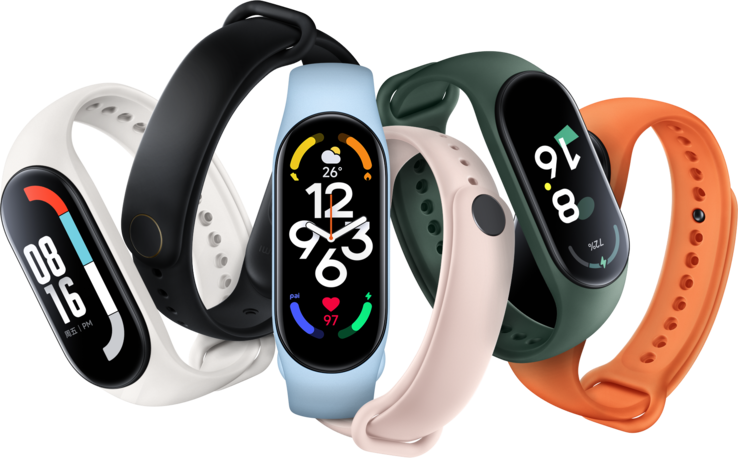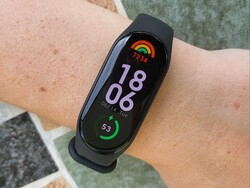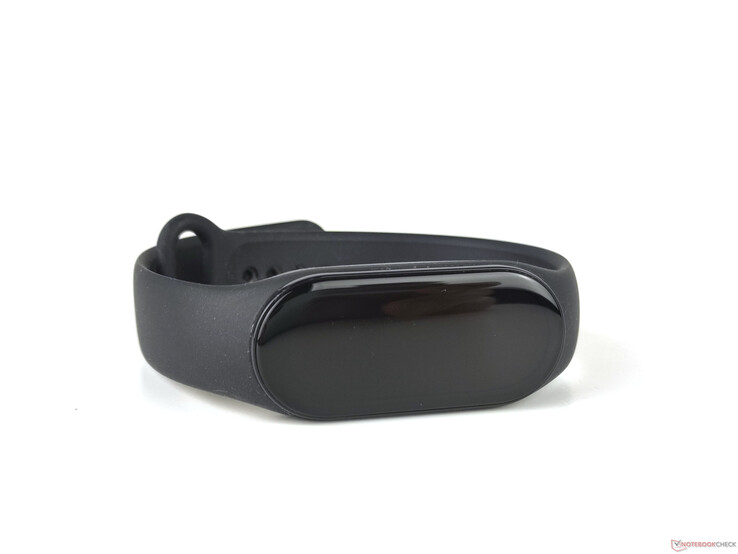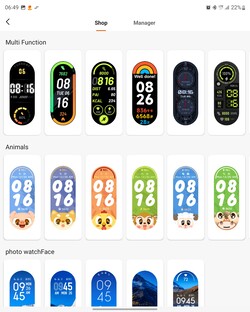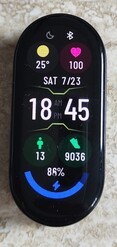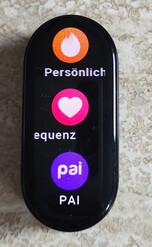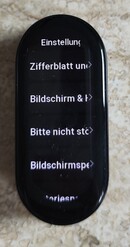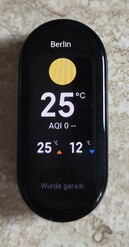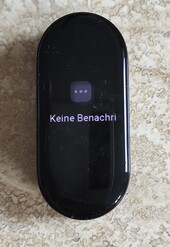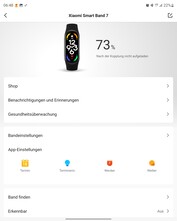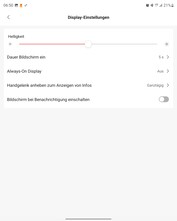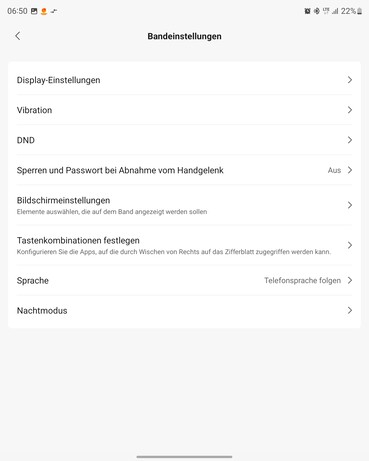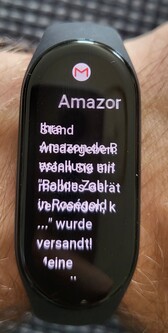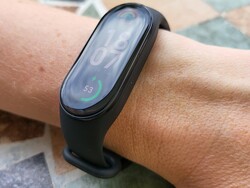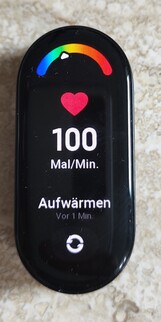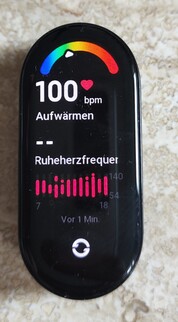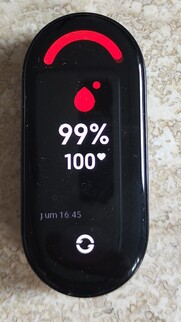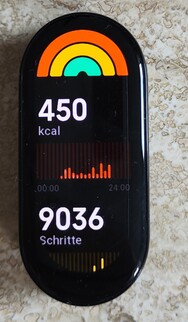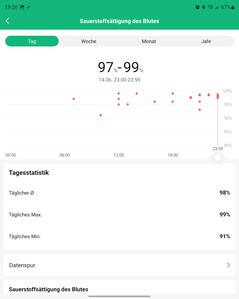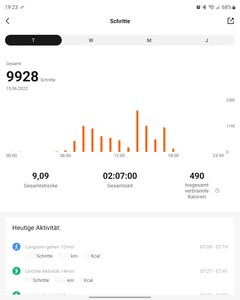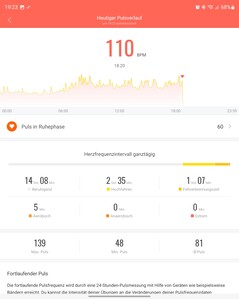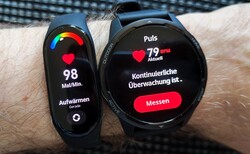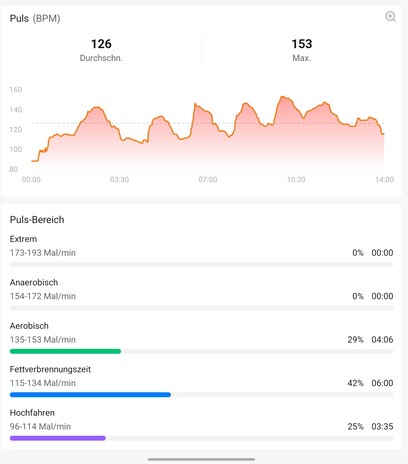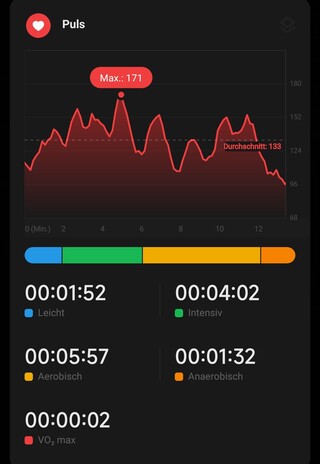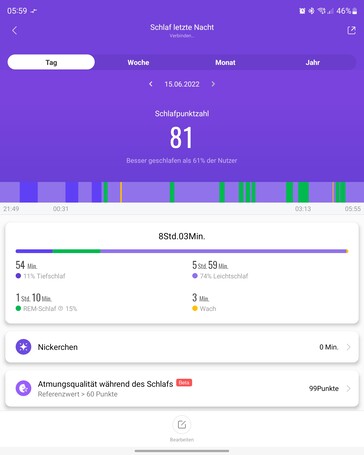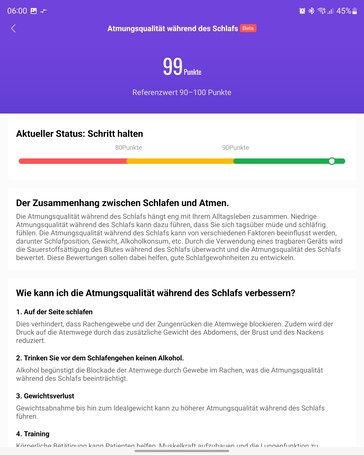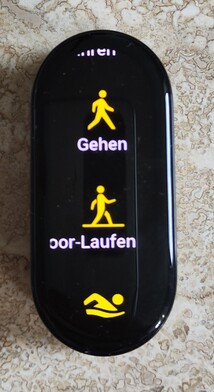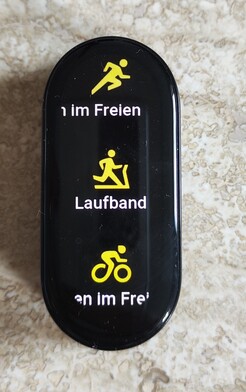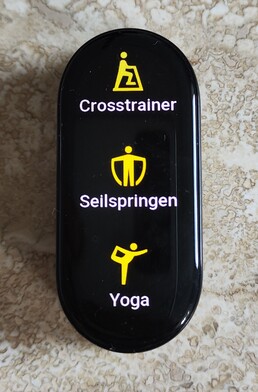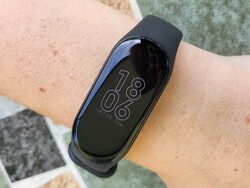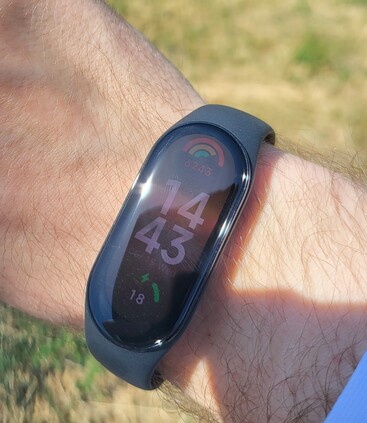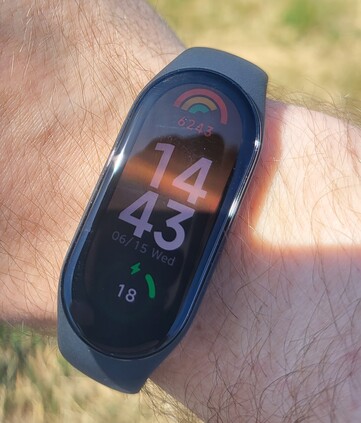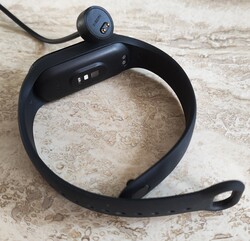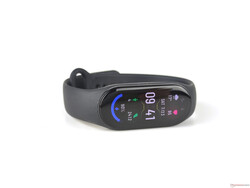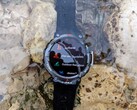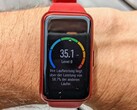Xiaomi Smart Band 7 review - Good fitness band with wasted potential & uncertainties
Visually, the Xiaomi Smart Band 7 differs only slightly from its predecessor but the display is visibly larger. In addition to the larger 1.62-inch AMOLED panel, the Chinese manufacturer also adds some new features to the latest fitness tracker iteration - the most obvious one is probably the always-on display. More than 110 sports modes are now available for recording sports activities.
The Xiaomi Smart Band 7 is available in Germany for a recommended retail price of 59.99 euros. For a price of about 45 euros, the fitness tracker can also be purchased in the China version via import companies, such as at our rental provider Trading Shenzhen.
Case and features - Smart Band 7 with larger display
Weighing less than 14 grams, the Smart Band 7 is very light and comfortable to wear on the wrist. The casing is protected against dust and water up to 5 ATM, so users can use the fitness wristband in the shower or for swimming without hesitation - theoretically up to a depth of 50 meters.
Like the Xiaomi Smart Band 6, the current version of the fitness tracker also consists of two components: a display unit and a silicone wristband. The latter features a good build quality and is sufficiently long. The adjustable length of the wristband is 160 to 224 millimeters. However, we would have wished for a somewhat secure closure, because during the test period it often happened that we hit the push-button with objects, such as a bag, and the wristband opened. Some kind of double lock would have been better here.
The large OLED panel with a screen diagonal of about 4.1 cm fills the majority of the display unit. Unfortunately, the manufacturer does not provide information about the slightly curved and tempered 2.5D glass surface. The sensors for measuring health data and the metal pins for charging the fitness tracker are located on the bottom of the plastic casing.
Setup and operation - Xiaomi fitness tracker with touch
The Mi Fitness app is not absolutely necessary for setting up the Smart Band 7. The former Mi Fit app, which was recently renamed Zepp Life, also works smoothly with the fitness tracker and was also used in the test. However, there are no major differences between the apps. In the test, we used the Android versions, mostly with a Samsung Galaxy Z Fold3.
The setup process is quite fast, but it takes a bit of time for the individual settings since many functions are disabled ex-factory. Without activating the corresponding slider in the app, the Smart Band 7 is not very smart.
There are also various watchfaces to choose from via the settings menu, Xiaomi itself speaks of over 110 pieces. Six different watchfaces are stored ex-factory, and the displayed content can be customized and exchanged in some of them. The same applies to the "clickability" of the watchfaces. Some lead to the corresponding submenu via click, but many do not.
Not only can the recorded data be viewed via the Zepp Life as well as Mi Fitness application, but various settings can also be made. The options include individual vibration patterns for alarms, messages, or incoming calls, the frequency of the heart rate measurement as well as a permanent SpO2 measurement. It should be noted that the range of functions differs between iOS and Android. With an Android smartphone, it is possible to set notifications for individual apps, among other things. Users of an iPhone do not have this choice.
The health apps from Xiaomi: Zepp, Zepp Life, and Mi Fitness require at least a Mi account. In addition, synchronization with Apple Health and Google Fit is possible. Exporting the fitness data is possible with the Zepp app via the item "Exercise user rights".
The device is operated via the capacitive touch display. Swiping to the left or right opens the configurable widgets, swiping down opens the notifications, and swiping up opens the settings. This works reliably and well in everyday use. However, the processor's performance does not seem to be sufficient to smoothly switch between missed messages or home screens from time to time. A wrist gesture can also be used to activate the screen. There are two response speeds for this, whereby we already found the "Normal" profile to be much too sensitive - this can be very annoying especially at night, so a scheduled period was always used to deactivate the function in the test. A hand placement gesture is also available to put the Smart Band 7 on stand-by.
Telephony and notifications
The Smart Band 7 does not have a microphone or speaker, so incoming calls are only displayed, but the user cannot react to them. If a call arrives on the smartphone, the Smart Band 7 vibrates unless it is deactivated in the settings. Calls via Skype or WhatsApp are not displayed in our test.
The fitness tracker displays messages without much delay. Many emojis are now supported, but there are still custom ones that are replaced by block symbols. A very good innovation, which was already provided via an update for the predecessor, is the reply option. In addition to predefined texts, custom replies can also be saved. Notifications that have been acknowledged only disappear when a message has been replied to - otherwise, they remain permanently in the inbox.
Health and fitness - Xiaomi wearable with oxygen measurement
As expected from a fitness tracker, the Smart Band 7 uses a 6-axis sensor (3-axis accelerometer and 3-axis gyroscope) to count steps and calculate calories burned from all activities in conjunction with personal data. The user can read most of the activity and health data via the 1.62-inch OLED panel, such as the measurement of heart rate and oxygen saturation in the blood. The biometric data is measured optically using the PPG (photoplethysmography) method. A corresponding heart rate sensor is installed for this purpose.
Activity Objectives
The Smart Band 7 informs the user about heart rate, steps, stress level, blood oxygen as well as calories burned, and PAI, the personal physiological activity indicator. The Xiaomi Band's activity goals also include workout sessions. All daily goals can be customized via the Zepp Life or even Mi Fitness app.
Steps, heart rate, heart rhythm and blood oxygen saturation
The recorded steps of the Xiaomi Band are within a realistic range. The device we used as a comparison device in the test, the Galaxy Watch Active2 exceeds the values of the Smart Band 7 by about 10 to 15 percent in steps taken, depending on the motion profile. The second comparison device, the Xiaomi Watch S1 Active, matches the Smart Band 7 except for a few steps (< 5 percent). However, all three wearables can be outwitted with a targeted hand movement. Basically, the more conservative measurement of the Xiaomi Band seems a bit closer to reality than a Galaxy Watch to us, and the total steps are less overestimated due to wrong inputs.
The continuous measurement of blood oxygen saturation works reliably in the test. The blood's oxygen saturation is a crucial indicator of the oxygen supply and necessary for muscles to be sufficiently supplied with energy. However, Xiaomi itself also points out that the SpO₂ function of the Smart Band 7 is not intended for diagnosing and monitoring physiological processes or other medical purposes. All data is for personal reference only.
For the test of the predecessor, we compared the saturation with a medically certified pulse oximeter at the same time in each case. In the series of measurements at that time, the Smart Band 6 consistently estimated the saturation as too high, with a minimum of 97 percent. The current Xiaomi Band now shows a fluctuation range of up to 91 percent.
The integrated heart rate monitor enables permanent monitoring of heart activity in real-time. Alternatively, an interval can also be determined in the app's settings, and further options, such as a pulse warning, are also available. The stress level is also based on heart rate variability and is indicated on a scale of 1 to 100.
For the heart rate measurement of the fitness tracker, we use the Watch S1 Active as a reference device, which achieved very similar values to the Polar H 10 chest strap in our test report. On our run, both the average heart rate and the peak values of the Smart Band 7 are slightly lower than those of the Xiaomi smartwatch. The measured average heart rate is 7 beats per minute lower, and the maximum value is 18 beats per minute lower.
The dynamics in the measurement curves match very well, but the fitness tracker's values are much more subdued. Short resting phases as well as strong pulse increases are only detected by the Smart Band 7 to a limited extent. The same applies to the "resting pulse" after the activity. While the Watch S1 Active reproduces the resting phase with 79 beats per minute, the Xiaomi Band takes much longer and still lingers at 98 beats per minute. However, the values match after about half an hour of rest (± 2 beats per minute deviation).
Sleep tracking
When users wear the Smart Band 7 overnight, the fitness tracker monitors sleep (deep sleep, light sleep, REM, and nap) as well as the quality of sleep breathing. However, the latter is still in the BETA phase. The measurements during the test seem basically plausible and convincing with a good agreement of the personal perception. Even short waking phases during the night are reliably mapped in the app the next morning, as long as the user has left the bed.
In contrast to the Smart Band 6 the latest version of the Xiaomi Band also displays certain sleep data itself. However, the app provides more detailed insights into sleep phases. However, there is unfortunately no smart alarm clock, which sets the wake-up call in a certain time window depending on the current sleep phase. We also miss a somewhat detailed presentation of the measurements, such as a diagram in which sleep data is displayed together with the pulse and blood oxygen over a time axis.
Training recording
The Xiaomi Band does not lack different workout modes with over 110 activities. For running outdoors, walking, treadmill, rowing machine as well as elliptical training, the fitness tracker has an automatic detection mode, although this only worked very unreliably in the test. For all other sports, activation via the sports menu is necessary. The distance is only determined via the paired smartphone; a GPS module and a barometer for measuring the altitude are not included in the Xiaomi Band.
GPS and navigation
The Smart Band 7 does not have a GPS module for locating the current position. The fitness tracker must always be connected to the smartphone to record the training distance. The workout itself also has to be started from the smartphone so that the distance is saved. Why this is not possible directly from the Smart Band 7 is not really clear.
Display - Mi Smart Band 7 with OLED
The biggest visual innovation of the Fitness tracker from Xiaomi comes from the AMOLED display with a diagonal of 1.62 inches. The visible area of the Xiaomi Smart Band 7 is larger than that of the Mi Smart Band 6 and increased by about 25 percent, according to Xiaomi. However, the pixel density is still 326 PPI, accordingly, the resolution of the Mi Band 7 has also grown to the same extent as the screen diagonal - the predecessor already features the same number of pixels per inch.
Another innovation concerns the "always-on display" feature, which makes the occasional raising of the wrist obsolete. This means that information can be read even in bright surroundings. Which data is displayed depends on the watch face. However, message inputs are not supported in any of the designs we tested. Besides the always-on display, the duration of the display illumination can be adjusted between 5 and 15 seconds in the menus.
The manufacturer specifies a maximum brightness of 500 nits. Thus, the fitness tracker is always readable in summer conditions in the test, but the readability is somewhat limited when used in direct sunlight and the associated reflections. Unfortunately, the Xiaomi Smart Band still lacks a sensor for the ambient light; instead, users manually adjust the luminance. Adjusting the brightness manually can be tedious in summer because we consider about 60% of the maximum luminance to be optimal indoors. An optional, time-based night mode dims the screen independently at least in the evening hours.
Performance and runtime - Mi Smart Band 7 with 180 mAh-battery
Xiaomi does not disclose information about the installed chipset and the memory. The handling is mostly smooth. Closing applications and scrolling through menus is usually smooth. However, small stutters creep in now and then, especially when reading messages or switching widgets to the home screen.
Battery life
The integrated battery has a capacity of 180 mAh. According to the manufacturer, it is supposed to provide a standby time of up to 14 days - but probably only under laboratory conditions. We operated our test device with a permanent Bluetooth connection, continuous pulse and blood oxygen measurement, and sleep and breathing activity monitoring. Thus, we had a significantly lower runtime.
However, the always-on function is crucial for the Smart Band 7's stamina. With a permanent display of display content, the battery indicator is reduced by about 35 to 40 percent per day - depending on how often the vibration motor is used by incoming messages. If we do without this feature, we get through the day with about 12 to 15 percent in the test. Users who want to monitor many training sessions with the fitness tracker should achieve a runtime of about 5 days with the Xiaomi Band.
Two charging pins on the bottom of the display unit are used for charging. As with the Xiaomi Smart Band 6, the Band 7 can be charged with the silicone strap, which proves to be more convenient in everyday use. The charging process takes about 1.5 hours.
Pros
Cons
Verdict
The latest fitness tracker from Xiaomi is quite convincing in our test, but the Xiaomi Band of the seventh generation cannot collect many sales arguments compared to the Smart Band 6, which is currently significantly cheaper at around 30 euros. Those who are looking for a handy and lightweight everyday wrist companion without high demands will still get a pretty and functional wearable. However, the health data should not be overestimated: the heart rate data in particular reveals good dynamics rather than meaningful individual values, especially with a high heart rate variability.
The only really new feature compared to the predecessor is the larger screen in combination with the always-on display function, which could provide real added value for some users, but we still see a lot of room for improvement here. The displayed information is too limited for us, this should be improved with further updates. The same applies to the notification menu because the permanent displaying of already-read emails or messages seems pointless. It is also difficult to understand why the customization degree of many watch faces is so low.
The Xiaomi Smart Band 7 offers many features in a light and compact casing.
The Smart Band 7 still does not have an integrated GPS module, which is not a must for a low-priced wearable. However, the RRP of the fitness tracker increases by 10 Euros, which would have made slightly bigger hardware upgrade desirable. Xiaomi should finally add an NFC chip for mobile payments or a brightness sensor to the successor.
Price and availability
The Xiaomi Smart Band 7 is available for about 50 euros in this country, among others at amazon.de. The fitness tracker is available at Trading Shenzhen for about 45 Euros and the predecessor for about 35 Euros.




